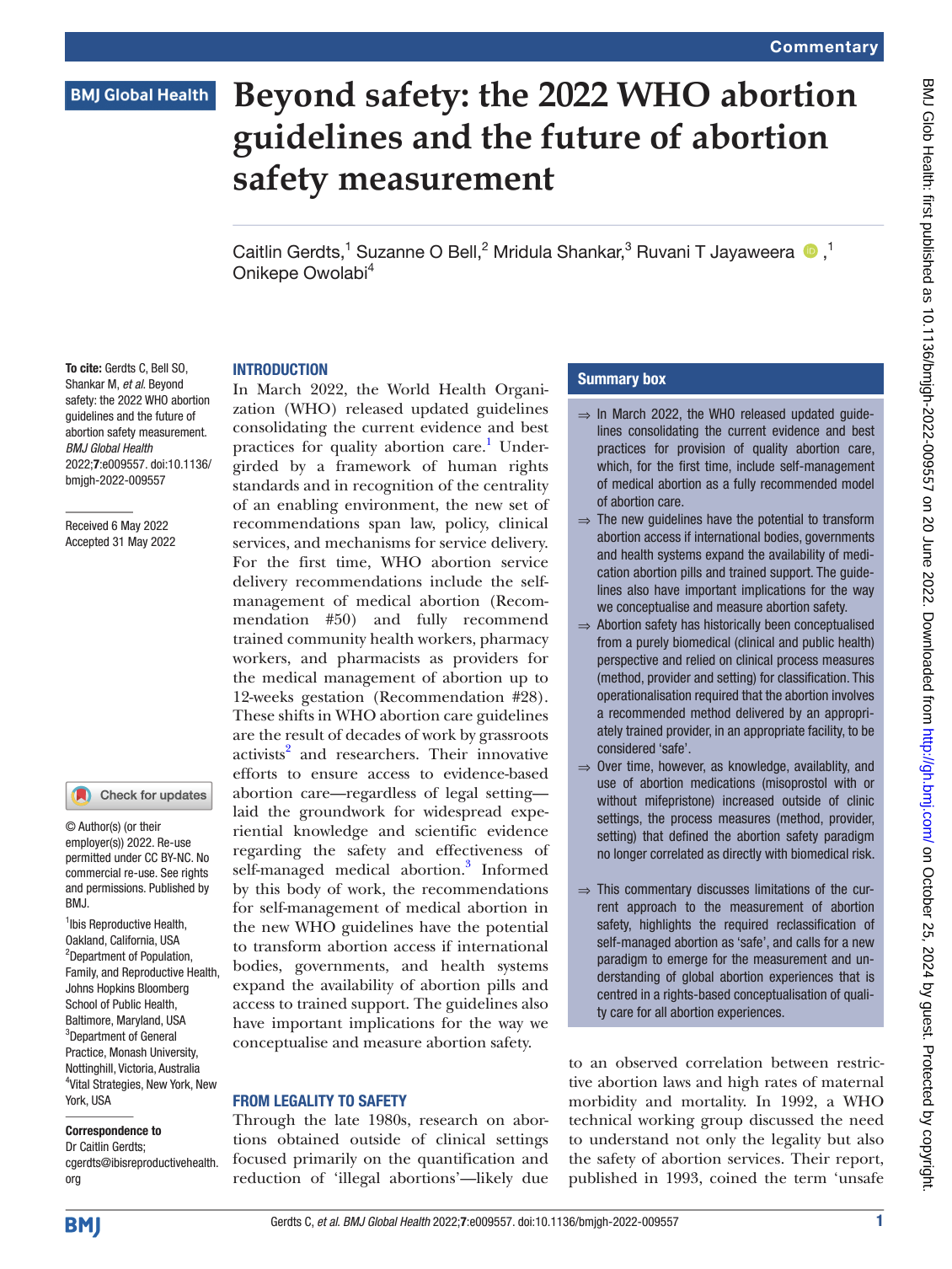Abortion safety has historically been conceptualized from a purely biomedical (clinical and public health) perspective and relied on clinical process measures (method, provider and setting) for classification. This operationalization required that the abortion involves a recommended method delivered by an appropriately trained provider, in an appropriate facility, to be considered “safe.” However, the updated 2022 WHO abortion guidelines consolidated the current evidence and best practices for provision of quality abortion care, which, for the first time, include self-management of medication abortion as a fully recommended model of abortion care. This article discussed limitations of the usual approach to the measurement of abortion safety, highlighted the required reclassification of self-managed abortion as “safe,” and called for a new paradigm to emerge for the measurement and understanding of global abortion experiences that is centered in a rights-based conceptualization of quality care for all abortion experiences.
Recent Abstracts
The Power of Storytelling: Guidance for the Creation of Testimonials
Lead Poisoning and Early Childhood Development
Prioritizing Evidence Gaps: Air Pollution and Health Impacts of Climate Action
Raising Alcohol Taxes to Reduce Harm: Fact Sheets for Brazil
Risk of mortality by aggression: A retrospective cohort study in women with notification…
How the Alcohol Industry Steers Governments Away From Effective Strategies to Curb Drink…
Analysis of the Efficacy of Alcohol Industry-Sponsored Drink-Driving Campaigns
Messaging Recommendations for Effective Road Safety Campaigns: Lessons From Formative Research for Drink…
Prescribing Psychostimulants for the Treatment of Stimulant Use Disorder: Navigating the Federal Legal…
Enforcement of COTPA in India- current status, challenges and solutions
